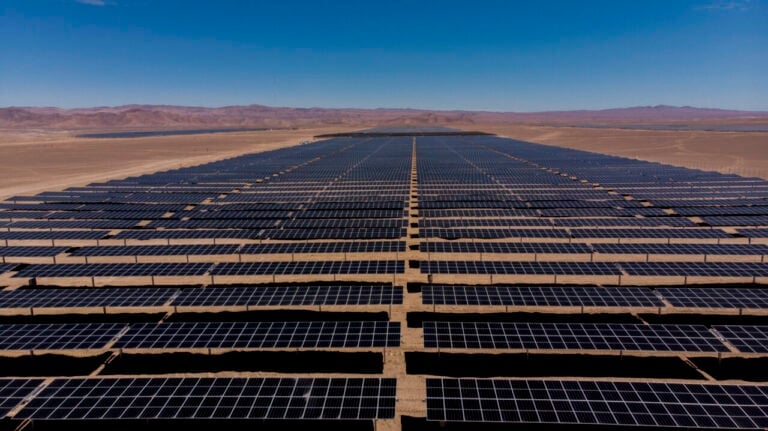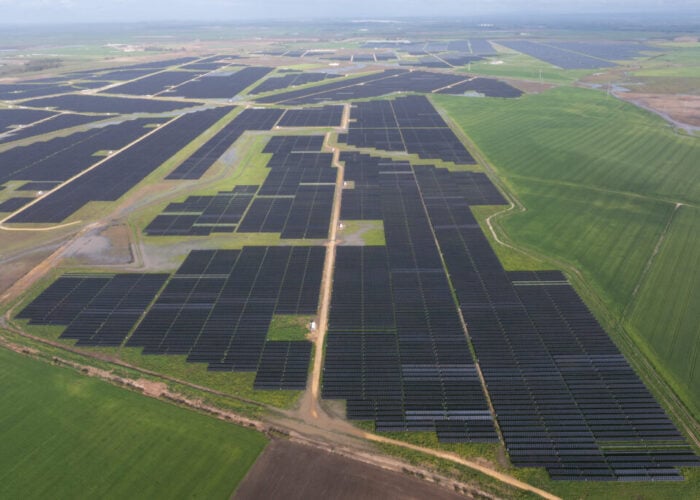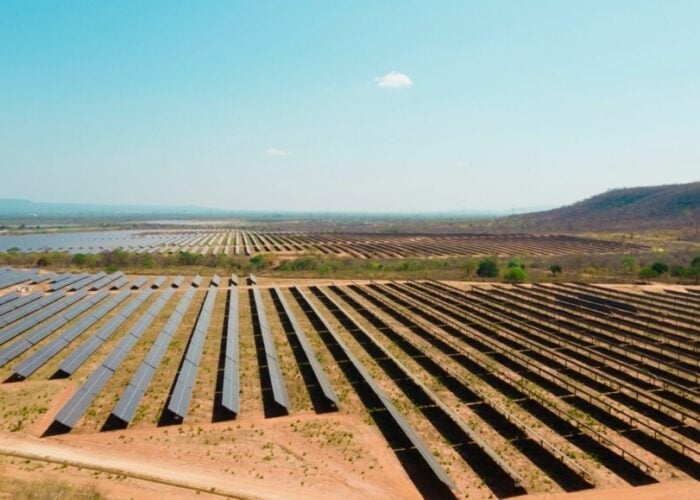
Analyst Wood Mackenzie has forecast the addition of 160GW of new solar PV capacity by 2034 in South America in a recent report.
According to the report, ‘South American Solar PV Market Outlook 2025’, which looks at solar PV installations over the next ten years, the drive for the addition of solar PV capacity in the region will be driven by diversification efforts, growing power demand and favourable system economics.
Try Premium for just $1
- Full premium access for the first month at only $1
- Converts to an annual rate after 30 days unless cancelled
- Cancel anytime during the trial period
Premium Benefits
- Expert industry analysis and interviews
- Digital access to PV Tech Power journal
- Exclusive event discounts
Or get the full Premium subscription right away
Or continue reading this article for free
Two markets will be leading the capacity additions, Chile and Brazil, which are the most mature ones in the region. Those two countries alone will account for 78% of all PV installations in the region in the coming years.
However, these two markets are facing challenges, which Wood Mackenzie expects will slow the rate of solar PV additions. These are increased curtailment issues – Chile saw a record 6TWh of solar and wind curtailed in 2024, more than double that of the prior year – or lagging transmission infrastructure. Chile most recently suffered a national power cut, which underlined the need for the country to strengthen the security and resilience of its national electric system, said the Chilean Association for Renewable Energies and Storage, ACERA, in a LinkedIn post (in Spanish).
These transmission and curtailment issues have driven the growth of solar-plus-storage projects in Brazil and Chile, and the latter currently has one of the largest solar-plus-storage in the world, the Oasis de Atacama project, being built by Spanish independent power producer (IPP) Grenergy.
In the longer term, the growing demand for green hydrogen will drive solar PV’s growth in Brazil, Chile and Colombia.
“South America’s solar PV market is expected to slow down as mature markets stabilise, but growth is expected in emerging markets,” said Felix Delgado, senior analyst, Americas power and renewables, at Wood Mackenzie.
“While there is growth in emerging markets, regional annual additions are expected to cool down as mature markets face lagging transmission infrastructure, increased curtailment, and rising transmission tariffs for small-scale solar.”
Brazil’s slowdown of PV growth
Distributed generation – and more specifically small-scale projects of less than 5MW – will represent nearly half (48%) of the total installations. This is due to distributed generation schemes that are still attractive across the region.
In Brazil, for instance, the growth of solar PV has been primarily driven by distributed generation, which accounts for two-thirds of the total installed solar PV capacity in the country. Out of the 54GW of total installed solar PV capacity in Brazil, as of the end of January 2025, distributed generation represented 36.4GW, according to data from trade association Absolar.
Among the key findings of the report, it states that PV installations in the region are expected to have peaked in 2024 due to a slowdown in Brazil from both small-scale and utility-scale solar additions.
Both segments have faced challenges to keep driving the growth of solar PV with utility-scale PV facing an oversupply of energy, while the country’s transmission infrastructure is lagging. On the small-scale front, the issues are due to rising transmission tariffs that solar faces, an increased import tax on modules – which was increased late last year from 9.6% to 25% – and distributor interconnection disputes.
Despite these challenges, Wood Mackenzie expects the capacity of solar PV to be driven by power purchase agreements (PPAs) under the free-market environment and distributed generation installations.
Curtailment and grid constraints in Chile
The report outlines similar issues in Chile with ongoing curtailment and grid constraints, which are pushing solar PV projects to be co-located with battery energy storage systems (BESS). In fact, installing BESS with a solar PV plant has become an “absolute necessity” in the southern American country, as Alejandro McDonough, managing director at Wärtsilä Chile, told PV Tech Premium last year.
“The transition to solar-plus-storage projects in markets like Brazil and Chile is a critical development,” Delgado added. “Chile is paving the way for storage adoption in the region and serves as a testing ground that highlights the challenges and solutions available for countries with already high penetration of renewable generation.”
Moreover, the report outlined the role of commercial and industrial (C&I) offtakers to drive the growth of solar PV in the region, with, for example, in Argentina the corporate PPA market allowing offtakers to sign PPAs in US dollars.
In countries like Peru and Colombia, auctions remain critical for the installation and growth of solar PV projects.






